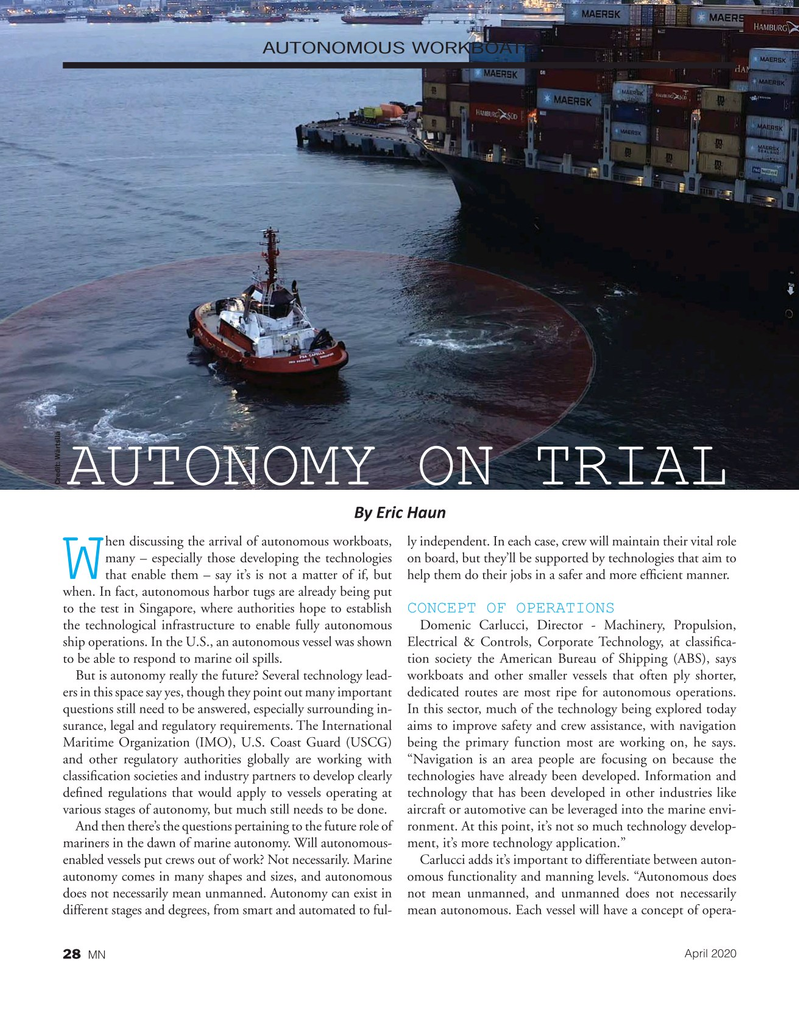
Page 28: of Marine News Magazine (April 2020)
Autonomous Workboats
Read this page in Pdf, Flash or Html5 edition of April 2020 Marine News Magazine
AUTONOMOUS WORKBOATS
AUTONOMY ON TRIAL
Credit: Wärtsilä
By Eric Haun hen discussing the arrival of autonomous workboats, ly independent. In each case, crew will maintain their vital role many – especially those developing the technologies on board, but they’ll be supported by technologies that aim to that enable them – say it’s is not a matter of if, but help them do their jobs in a safer and more ef?cient manner.
W when. In fact, autonomous harbor tugs are already being put to the test in Singapore, where authorities hope to establish
CONCEPT OF OPERATIONS the technological infrastructure to enable fully autonomous Domenic Carlucci, Director - Machinery, Propulsion, ship operations. In the U.S., an autonomous vessel was shown Electrical & Controls, Corporate Technology, at classi?ca- to be able to respond to marine oil spills. tion society the American Bureau of Shipping (ABS), says
But is autonomy really the future? Several technology lead- workboats and other smaller vessels that often ply shorter, ers in this space say yes, though they point out many important dedicated routes are most ripe for autonomous operations. questions still need to be answered, especially surrounding in- In this sector, much of the technology being explored today surance, legal and regulatory requirements. The International aims to improve safety and crew assistance, with navigation
Maritime Organization (IMO), U.S. Coast Guard (USCG) being the primary function most are working on, he says. and other regulatory authorities globally are working with “Navigation is an area people are focusing on because the classi?cation societies and industry partners to develop clearly technologies have already been developed. Information and de?ned regulations that would apply to vessels operating at technology that has been developed in other industries like various stages of autonomy, but much still needs to be done. aircraft or automotive can be leveraged into the marine envi-
And then there’s the questions pertaining to the future role of ronment. At this point, it’s not so much technology develop- mariners in the dawn of marine autonomy. Will autonomous- ment, it’s more technology application.” enabled vessels put crews out of work? Not necessarily. Marine Carlucci adds it’s important to differentiate between auton- autonomy comes in many shapes and sizes, and autonomous omous functionality and manning levels. “Autonomous does does not necessarily mean unmanned. Autonomy can exist in not mean unmanned, and unmanned does not necessarily different stages and degrees, from smart and automated to ful- mean autonomous. Each vessel will have a concept of opera-
April 2020 28 MN

 27
27

 29
29
